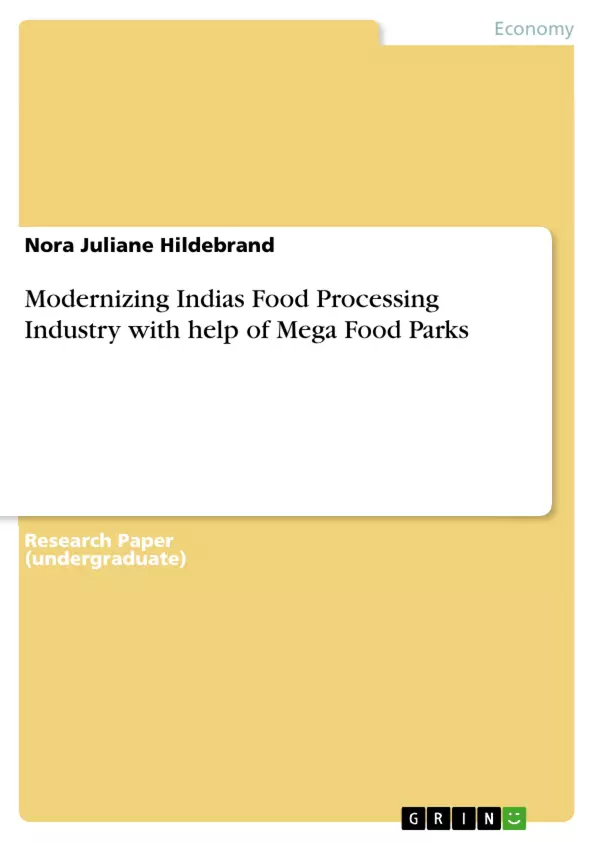This paper will focus on India and its food processing industry, which is an underdeveloped sector but has ambitious growth targets strongly supported by the government. Humans have been using different techniques to convert raw plant and animal materials into processed food products for several centuries now. Sun-drying and the preservation of meat or fish with salt are the oldest known methods while nowadays, food processing involves chopping, freezing, fermenting, pasteurizing, adding food additives like antioxidants or emulsifiers and many more sophisticated procedures. Like most industries, food processing – “the linkage between farm and fork” – has undergone tremendous technological changes.
Thanks to the enhancement of machines and the development of new techniques, shelf life could be notably extended and we are able to benefit from a rich selection of diverse food products in supermarkets. However, due to the strong dependence on modern and often expensive machinery, this industry is a lot more advanced in high-income countries than in low- and middle-income countries.
Inhaltsverzeichnis (Table of Contents)
- 1. Introduction
- 2. Food Processing Industry
- 2.1 Global Overview
- 2.2 Food Processing in India
- 2.2.1 Facts and figures
- 2.2.2 Key Factors Driving Growth
- 2.2.3 Challenges
- 2.2.4 State Support
- 3. Mega Food Parks
- 3.1 Global Experience with Food Clusters
- 3.2 Mega Food Parks in India
- 3.2.1 Satara Mega Food Park
- 3.2.2 Srini Food Park
- 3.3 Positive Impacts and Difficulties
- 4. Outlook
Zielsetzung und Themenschwerpunkte (Objectives and Key Themes)
This study aims to analyze the role of Mega Food Parks in modernizing India's food processing industry. The work explores the current state of the food processing industry in India, focusing on key growth drivers, challenges, and the role of government support. The analysis then delves into the concept of Mega Food Parks, examining both global experiences and the implementation of this model in India. Finally, the study assesses the potential impact of Mega Food Parks on the food processing sector in India, considering both potential benefits and potential difficulties.
- The current state of the Indian food processing industry
- The role of Mega Food Parks in modernizing the food processing sector
- Global experiences with food clusters
- The implementation of Mega Food Parks in India
- The potential impact of Mega Food Parks on the food processing sector in India
Zusammenfassung der Kapitel (Chapter Summaries)
- Chapter 1: Introduction Provides a brief overview of the topic and sets the stage for the analysis to follow.
- Chapter 2: Food Processing Industry Discusses the global food processing industry and examines the current state of the food processing sector in India, including facts and figures, key growth drivers, challenges, and the role of government support.
- Chapter 3: Mega Food Parks Explores the concept of Mega Food Parks, examining both global experiences and the implementation of this model in India. This chapter also analyzes the positive impacts and difficulties associated with Mega Food Parks.
Schlüsselwörter (Keywords)
This analysis focuses on the modernization of India's food processing industry through the implementation of Mega Food Parks. Key terms and concepts explored include the Indian food processing sector, food clusters, global experiences, government support, and the potential impact of Mega Food Parks on the food processing industry in India.
- Citar trabajo
- Nora Juliane Hildebrand (Autor), 2017, Modernizing Indias Food Processing Industry with help of Mega Food Parks, Múnich, GRIN Verlag, https://www.grin.com/document/453989



